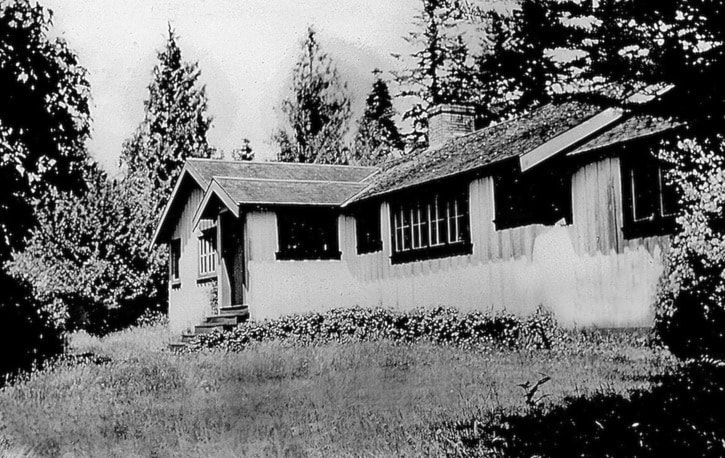From supplying provisions to goldseekers, to a delightful riverside family home and farm, to a grazing meadow for elk, the property at the end of a narrow winding lane, Calvert Road, has seen it all.
Riverside, home of the Ebbs-Canavans, with its rambling family home, rustic farm fences, a scattering of grazing horses, a miniature pony and a venerable barn are encircled by stately Douglas firs, maples and ornamental trees. Pride of place goes to a copper beech, currently in deep purple hues.
The first immigrant to settle on this riverside location was a French-Canadian voyageur, Jean Baptiste Brule, who had crossed the continent from Quebec in the fur trade. Married in 1831 to Marguerite, a T’Sou-ke woman he had met at the fur trading base Fort Vancouver on the Columbia River, he had journeyed north with his family after the Oregon Treaty set the boundary at the 49th parallel in 1846.
Like others of his group who wished to settle alongside the Sooke River to be as near to the government-established T’Sou-ke Reserve No 1 as they could, he set up camp there, establishing cattle and sheep and growing crops for feed, including growing mangels at the lower level along the river.
It was natural that when the British-funded VI Exploring Expedition set out in 1864 with a young T’Sou-ke hunter and packer, Louis Lazzar, to guide them, that they stopped to acquire provisions from Brule’s pioneer holdings. With the group’s discovery of gold in a tributary of the Sooke, the Leech River received its name and a gold mining camp sprang up overnight. The Brule homestead became a regular stop for provisioning the miners with beef and mutton.
It is our understanding that after Brule’s passing at Victoria’s St. Joseph’s Hospital in the 1880s, the place was left to the Catholic Church. Pioneer cabins and sheds remained on the site when it was purchased by Dr W. D. Calvert who had the house built in 1913 by the Richardson brothers, as is shown in this photo. Dr. Calvert retired from an active practice when he came to Sooke with his wife and four children, and operated a small dairy farm. One of the emergencies that called out his medical skills was the flu epidemic which took several lives in East Sooke.
In 1944 the Calverts retired to Vancouver and the property was purchased by Elaine MacFarlane, who in turn sold the acreage to a retired British Army officer, Captain Mottershead, who pastured horses and sheep on the secluded site. Since 1978 the property has been home to a Mottershead granddaughter, Carol Anne, her husband Ken Ebbs-Canavan and their family.
Elida Peers,
Historian
Sooke Region Museum
